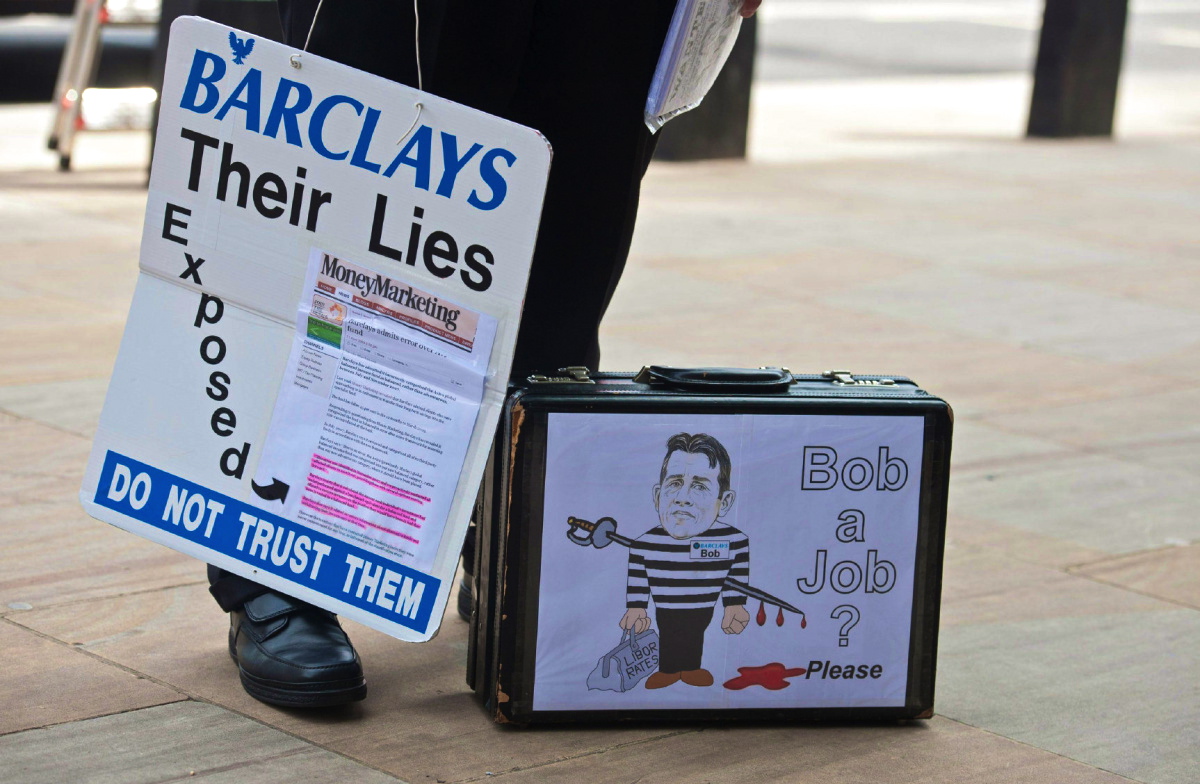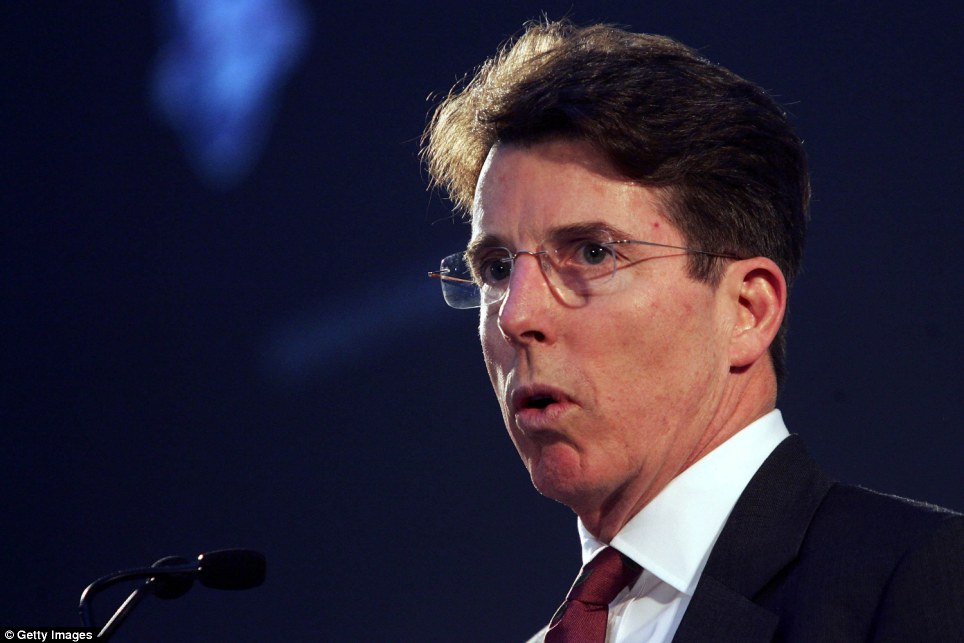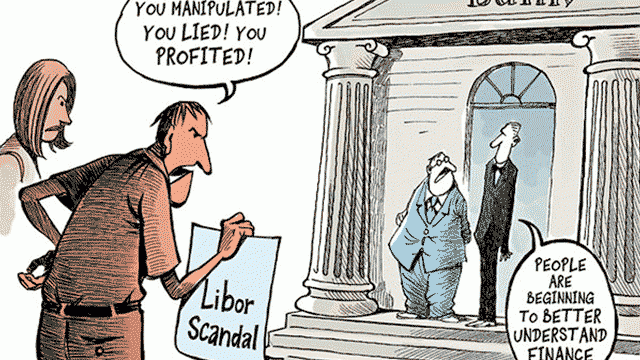
Sacramento County waded into a massive global financial scandal over interest rates last week, accusing some of the world's largest banks of rigging interest rates to maximize their profits at the county's expense.
The county sued Bank of America, Citigroup, Deutsche Bank and 15 others, saying they cost Sacramentans untold sums by manipulating the London Interbank Offered Rate, or Libor – a kind of super interest rate. Libor is arguably the world's most influential interest rate, a benchmark against which trillions of dollars in loans and other transactions are set.
The Libor scandal, which exploded about a year ago, has become one of the biggest financial frauds of recent times. Criminal charges have been filed, and three top banks – UBS, Barclays and Royal Bank of Scotland – have paid U.S. and British regulators fines totaling $2.6 billion. Barclays' CEO resigned over the matter.
Sacramento County is just the latest government agency to claim injury from manipulation of the Libor rate. More than a dozen California cities and counties, plus the UC system, have already filed lawsuits similar to Sacramento County's, seeking damages from the banks.
"This is a case of enormous magnitude," said Nanci Nishimura of Cotchett Pitre & McCarthy, a Burlingame law firm representing Sacramento County and the other California government agencies. "Libor … is used around the world to set interest rates. Libor permeates through every financial transaction."
Sacramento County's lawsuit doesn't specify financial damages, and county spokeswoman Chris Andis declined to comment on the case.
The suit does allege that the county was harmed in two basic ways: When the banks contrived to raise Libor, the county paid more when it borrowed money. When they worked in concert to drive Libor down, the county was robbed of profit when it loaned the big banks money through vehicles known as interest-rate swaps.
The suit mentions several of those swaps, taking place between 2003 and 2009 and involving Bank of America, Morgan Stanley, Merrill Lynch, Bear Stearns and Deutsche Bank.
Interest rate swaps are really an exchange of cash flows, in which each party lends each other the identical amount of money at different interest rates. Sacramento County used them in order to turn its variable-rate bond payments – which were vulnerable to spikes in interest rates – into predictable fixed-rate debt.
With the swaps, the county paid the banks a fixed rate on loans worth tens of millions. The banks paid the county a floating rate tied to Libor.
According to the lawsuit, the county got less money than it was supposed to because the banks had teamed up to lower the Libor rate.
"When Libor was suppressed, they were cheated," Nishimura said, referring to county officials.
Libor is set by a group of major banks, representing how much interest they'd be willing to pay on a loan from another bank. The rate is reported each day by the Thomson Reuters news service.
Sacramento County's claim says the banks routinely manipulated Libor up and down to suit their purposes. In particular, the county alleges, as the financial crisis gathered steam in 2007, there was a concerted effort to reduce the rate as much as possible.
The reason had to do with reputation as much as anything. Declaring how much interest a bank would pay is an expression of how risky its finances were; high-risk borrowers always pay more, and submitting a high Libor rate invited speculation that a bank was in trouble. So the banks, allegedly working in tandem, started submitting lower rates.
"Each bank shared a powerful incentive to collude with its co-conspirators to ensure it was not the odd man out," the lawsuit says.
The scandal has sparked criminal charges. After pleading guilty to federal fraud charges over the winter, Swiss bank UBS paid a $1.5 billion fine, and Royal Bank of Scotland paid $615 million. Barclays escaped criminal prosecution by agreeing to pay a $450 million fine last summer.
Last month, a former high-profile UBS and Citigroup trader named Thomas Hayes was arrested in London in connection with the scandal.
The banks have had some success in fighting off Libor-related claims. In March, a federal judge in New York tossed out most of a class- action suit filed by bondholders, the city of Baltimore and others, saying the plaintiffs hadn't shown they were harmed.
Nishimura, however, said Sacramento County and the other California government agencies have plenty of legal ground to file suit.
"We can't be scared away because the (New York) judge took such a hard-line, narrow approach," she said.
Nishimura's firm has now filed a total of 10 lawsuits. Besides Sacramento County, plaintiffs include the UC system, Sonoma and San Mateo counties, and an umbrella organization encompassing the city and county of San Diego and their suburbs.
Nishimura said the firm deliberately filed individual lawsuits, not class-action cases, so it can demonstrate actual damages to each government agency.
The Libor matter has also drawn the attention of the state's giant pension fund, CalPERS. The fund is still studying the issue and "will take appropriate action, if necessary," said spokesman Joe DeAnda.
Officials with the banks either declined to comment or couldn't be reached for comment.
The Libor affair is just one of many major scandals to hit big global banks in recent years. Last week, U.S. regulators slapped Barclays with a $453 million fine for manipulating trades in Western electricity markets, including California's. The London bank said it would fight the fine.
Also last week, JPMorgan Chase was reported to be in settlement talks with federal regulators over its California electricity trading.
Various reports said the bank was prepared to pay anywhere from $400 million to $1 billion in a settlement.
3 WAYS TO SHOW YOUR SUPPORT
- Log in to post comments
















